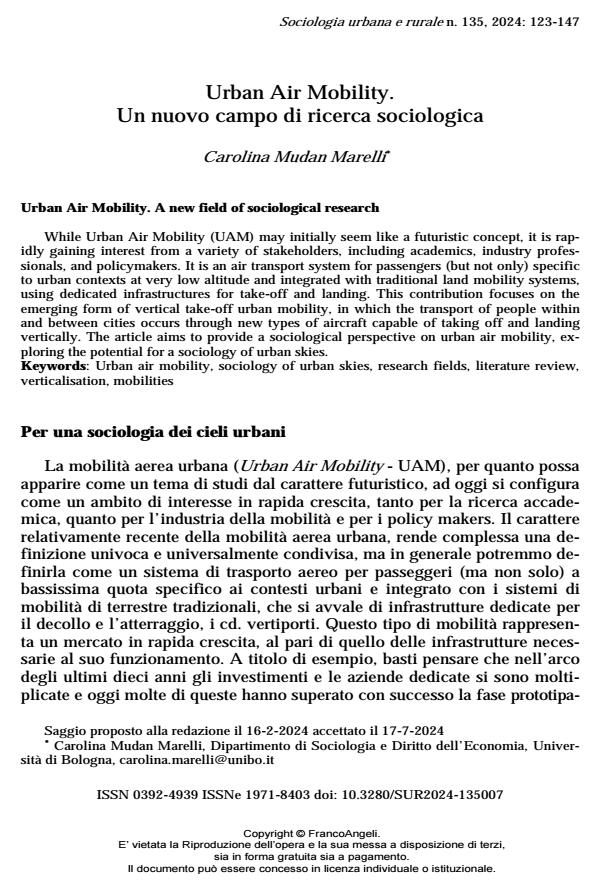Urban Air Mobility. A new field of sociological research
Journal title SOCIOLOGIA URBANA E RURALE
Author/s Carolina Mudan Marelli
Publishing Year 2024 Issue 2024/135
Language Italian Pages 25 P. 123-147 File size 201 KB
DOI 10.3280/SUR2024-135007
DOI is like a bar code for intellectual property: to have more infomation
click here
Below, you can see the article first page
If you want to buy this article in PDF format, you can do it, following the instructions to buy download credits

FrancoAngeli is member of Publishers International Linking Association, Inc (PILA), a not-for-profit association which run the CrossRef service enabling links to and from online scholarly content.
While Urban Air Mobility (UAM) may initially seem like a futuristic concept, it is rapidly gaining interest from a variety of stakeholders, including academics, industry professionals, and policymakers. It is an air transport system for passengers (but not only) specific to urban contexts at very low altitude and integrated with traditional land mobility systems, using dedicated infrastructures for take-off and landing. This contribution focuses on the emerging form of vertical take-off urban mobility, in which the transport of people within and between cities occurs through new types of aircraft capable of taking off and landing vertically. The article aims to provide a sociological perspective on urban air mobility, exploring the potential for a sociology of urban skies.
Keywords: Urban air mobility, sociology of urban skies, research fields, literature review, verticalisation, mobilities
Carolina Mudan Marelli, Urban Air Mobility. Un nuovo campo di ricerca sociologica in "SOCIOLOGIA URBANA E RURALE" 135/2024, pp 123-147, DOI: 10.3280/SUR2024-135007